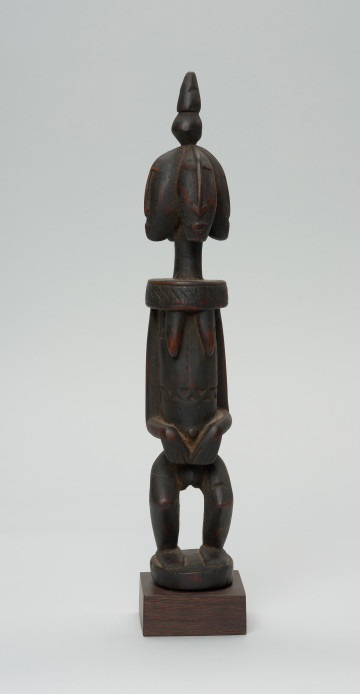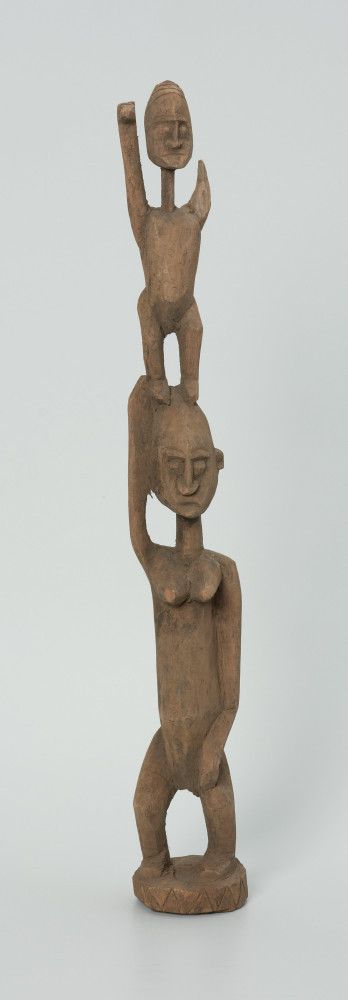
Four-headed anthropomorphic figure
między 1951 — 2000
National Museum in Szczecin
Part of the collection: Collection of Dogonian art
The figurine depicts two figures, one sitting on the shoulders of the other. This depiction refers to the myth of the Dogon migration from the country of Mande, which probably lies within the borders of the present-day Republic of Guinea, more than 700 km away from the Bandiagara Escarpment, their modern homeland. The Dogon moved in several waves between the 12th and 15th centuries. The myth tells of the migration of four ancestors, the brothers Dyon, Ono, Domno and the youngest Arou. From them derive the four great groups of Dogon, often referred to by the term tribes. Dyon carried the march-weary Arou on his shoulders, and the latter took advantage of the better visibility and was the first to lay claim to the lands stretching out on the horizon. Enraged by his youngest brother's boldness and disregard for the order of seniority, Dyon left him on the road. Wandering alone, Arou met an old woman to whom he offered his help. In return for the respect and care with which he approached her, the woman gave the youngest of his brothers unusual magical gifts, thanks to which Arou's descendants successfully defended themselves against enemies, domesticated animals and caused rain. Equipped with such wonderful gifts, Arou joined his brothers and together they continued their journey.The myth of the journey of the four brothers shows the process of the Dogon settlement and their social, religious and political organisation. From the oldest Dyon, in fact, descend most of the farmers who settled on the Bandiagara Plateau. The descendants of the Ono, also farmers, occupied the areas southeast of the Escarpment. The Domno descendants were traders and craftsmen, living in the areas around Douentza and Hombori, while the descendants of Arou became chiefs and priests, who settled in the foothills of the Bandiagara Escarpment.
Ewa Prądzyńska
Author / creator
Dimensions
cały obiekt: height: 10,5 cm, width: 2,2 cm
Object type
figure
Creation time / dating
Creation / finding place
Identification number
Location / status

między 1951 — 2000
National Museum in Szczecin

między 1976 — 1984
National Museum in Szczecin
około 1970
National Museum in Szczecin
DISCOVER this TOPIC
National Museum in Szczecin
DISCOVER this PATH
Educational path